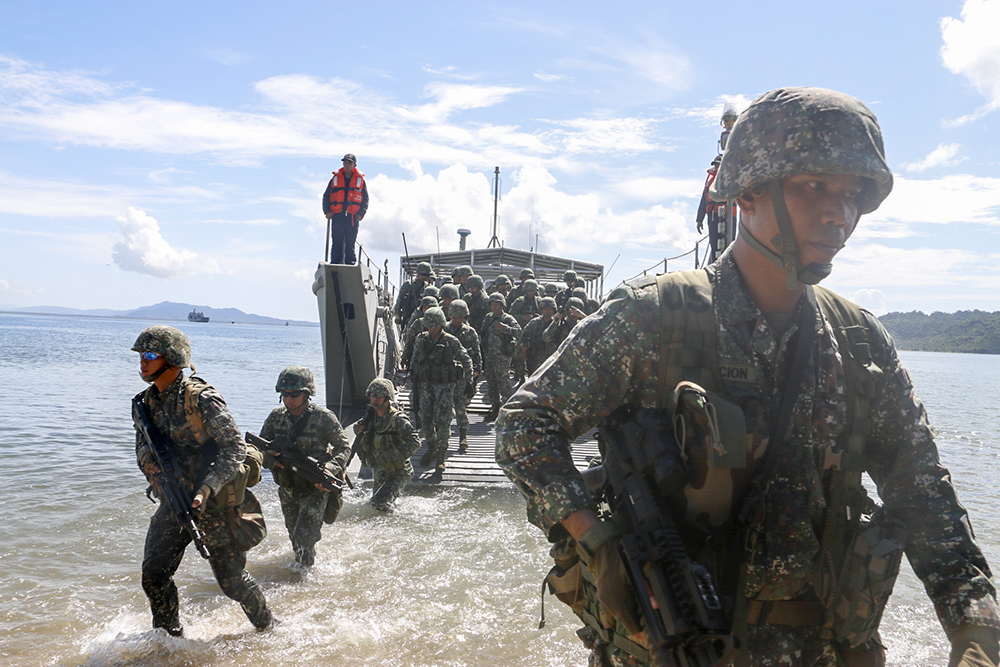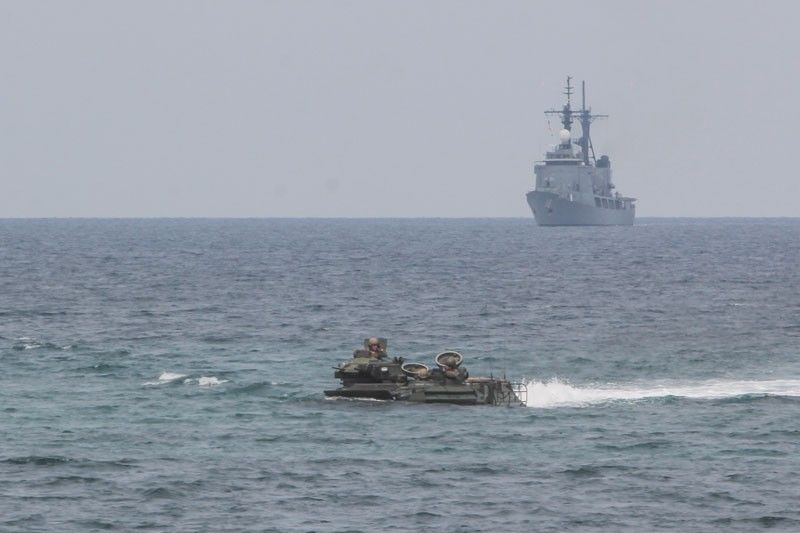Timeline: Constant US troop presence amid Duterte's changing moods

MANILA, Philippines — President Rodrigo Duterte has once again threatened to end the Philippines' Visiting Forces Agreement with the United States, this time in response to the cancellation of Sen. Bato
The president gave Washington a month to "correct" the visa cancellation of Dela Rosa, who was top cop when Duterte launched his bloody "drug war" in 2016.
This would not be the first time that Duterte has issued an ultimatum against the country's long-time ally and former colonizer.
2016
In September 2016, Duterte declared an end to the annual Philippines-US
The president said the joint military exercises with US troops were something that Beijing does not want.
RELATED: Duterte to US troops: Leave Mindanao | US troops to remain in Mindanao
Duterte also announced that he would
Duterte's economic managers Finance Secretary Carlos Dominguez and Socioeconomic Planning Secretary Ernesto Pernia were quick to clarify in the
2017
In January 2017, Duterte threatened to abrogate the VFA and called on the US military to stop unloading weapons in the country. The president claimed that US troops were building a depot in the Philippines and were unloading arms in Palawan, Cagayan de Oro and Pampanga.
Duterte's declaration in 2016 to end the
However, the war games had

In this file photo from 2017, Philippine Marines deploy from a landing craft for a simulated disaster response operation. The 2017 Balikatan exercises focused on humanitarian assistance and disaster response. Philstar .com/Efigenio Toledo IV
The military said the joint military drills' focus would shift to humanitarian
In November 2017, Duterte and US President Donald Trump would agree to additional exercises between the two countries as part of their commitment to enhance counterterrorism cooperation.
They also agreed to increase information sharing and addressing the drivers of conflict and extremism.
2018
In April 2018, Duterte recognized the importance of the country's military alliances with the United States and Japan since World War II.
The
In a statement for the commemoration of the Day of Valor, the president called the US "our strong military and

In this file photo from 2018, a US Marine amphibious assault vehicle prepares to land on a beach in San Antonio, Zambales. Seen in the background is the Philippine Navy's BRP Ramon Alcaraz. Philstar .com/Efigenio Toledo IV
The US Embassy said in September 2018 that the Philippines is the largest recipient of American military
Molly Koscina, US Embassy spokesperson
Upon concluding the 2018 Mutual Defense Board and Security Engagement Board in September 2018, the AFP and the US
2019
US Secretary of
A month after Pompeo visit to Manila in March 2019, Foreign Affairs Secretary Teodoro Locsin Jr. said the US will remain the only military ally of the country.
“Why the US, the only world power that is a bastion of democracy and human rights, is and will remain our only military ally. We don’t need any other,” Locsin tweeted.

In this April 5, 2019 photo, the amphibious assault ship USS Wasp maneuvers alongside the Philippine Navy offshore patrol vessel BRP Ramon Alcaraz (PS 16) in support of Exercise Balikatan 2019. US Navy/Mass Communication Specialist 1st Class Daniel Barker
Despite Duterte's previous order to scale down the
Last year's
By September 2019, then AFP chief Gen. Benjamin Madrigal Jr. and US Indo-Pacific Command commander Adm. Philip Davidson signed an agreement planning
- Latest
- Trending
































